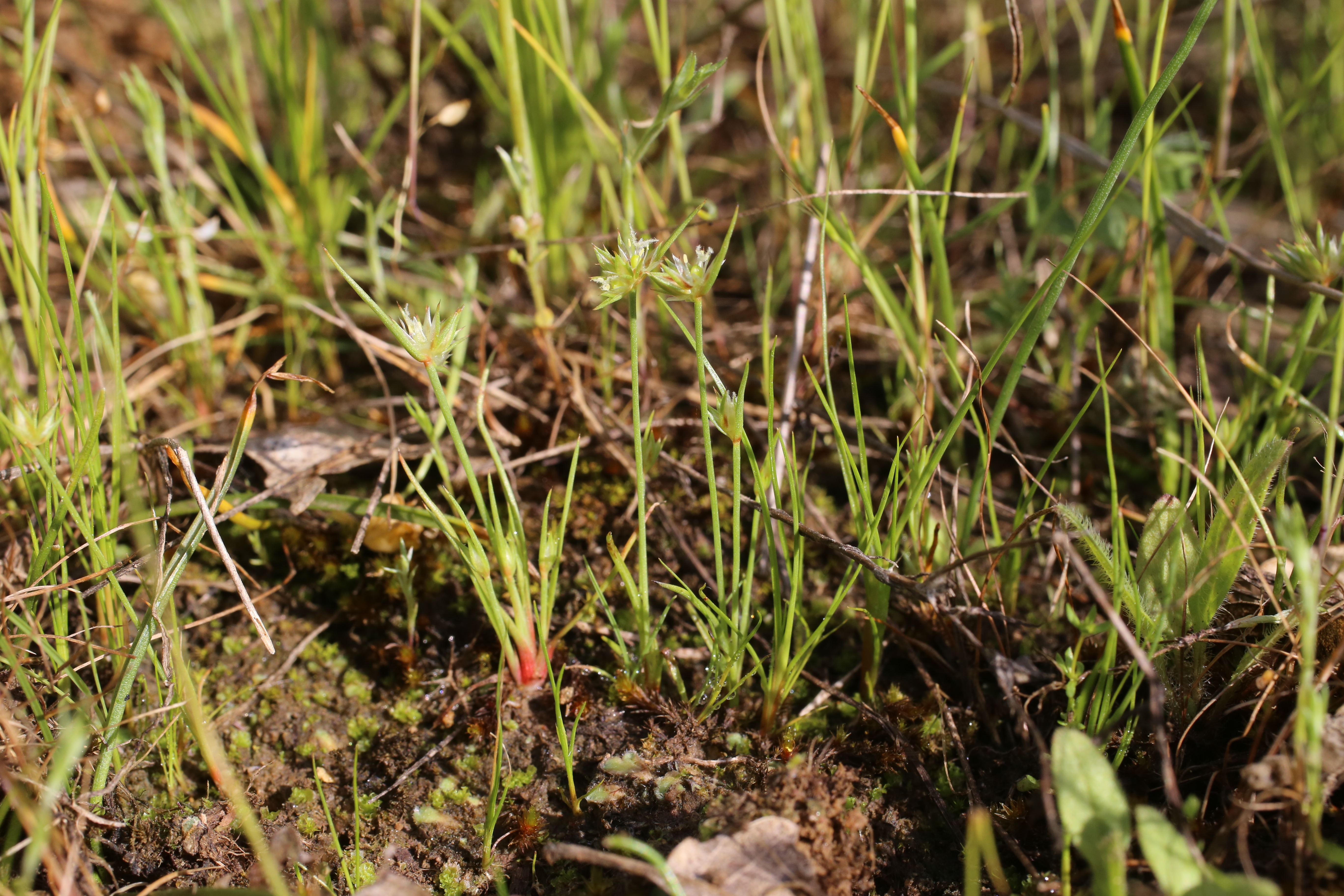Dwarf rush
(Juncus capitatus)

Description
Juncus capitatus is a species of rush known by the common names dwarf rush and leafybract dwarf rush. It is native to Europe, Asia and North Africa. It is also an introduced species in parts of North America such as California and the Gulf Coast. It grows in moist areas, such as wet sand, vernal pools, and ditches. The dwarf rush is a small annual herb not exceeding ten centimeters in height. The stems are erect and thready, flat or somewhat corrugated. The leaves are basal and up to 3 or 4 centimeters long. The plant is green to red or brownish in color. Each stem bears an inflorescence of up to six clustered flowers. The pointed bracts at the base of the inflorescence are often over a centimeter long, longer the flower cluster itself, and are somewhat leaflike, giving the species its common name. Each flower has pointed outer tepals and thinner, shorter, oval-shaped inner tepals. There are three stamens. The fruit is a tiny oval-shaped capsule one to two millimeters long. The dwarf rush is native to Europe, West Asia and North and East Africa. In the British Isles it is only known from Anglesey, Cornwall and the Channel Islands, and is rare in all these locations. It germinates in autumn and grows in places where water stands in winter and which dry up completely in summer, meaning the plant faces little competition. These locations include rock ledges on sea cliffs, around outcrops of serpentine rock and in dune slacks. In some locations it has sometimes been thought to be locally extinct, but then reappeared later. Juncus is a genus of monocotyledonous flowering plants, commonly known as rushes. It is the largest genus in the family Juncaceae, containing around 300 species. Rushes of the genus Juncus are herbaceous plants that superficially resemble grasses or sedges. They have historically received little attention from botanists; in his 1819 monograph, James Ebenezer Bicheno described the genus as "obscure and uninviting". The form of the flower differentiates rushes from grasses or sedges. The flowers of Juncus comprise five whorls of floral parts: three sepals, three petals (or, taken together, six tepals), two to six stamens (in two whorls) and a stigma with three lobes. The stems are round in cross-section, unlike those of sedges, which are typically somewhat triangular in cross-section.
Taxonomic tree:







